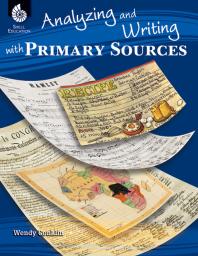
A Primary Source is an original record such as a document, image, or artifact that provides a first-hand account or direct evidence of a historical event or topic. In other words, original material created or witnessed at the time of the event in question or under study.
In contrast, a Secondary Source is one created by someone who did not witness or experience first-hand the events in question. Often these provide analysis or interpretation of events and may use or quote from primary sources to support their ideas.
For tips on evaluating and using primary sources, please see the Society of American Archivists "Guidelines for Primary Source Literacy."
Primary source examples include:
Secondary source examples include:
 Analyzing and Writing with Primary Sources
by
Analyzing and Writing with Primary Sources
by